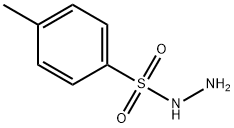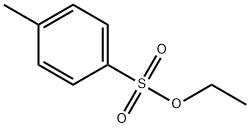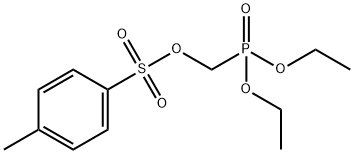4-Methylphenylacetic acid
Synonym(s):4-Methylphenylacetic acid
- CAS NO.:622-47-9
- Empirical Formula: C9H10O2
- Molecular Weight: 150.17
- MDL number: MFCD00004353
- EINECS: 210-738-7
- SAFETY DATA SHEET (SDS)
- Update Date: 2025-01-27 09:38:02

What is 4-Methylphenylacetic acid?
Chemical properties
white fine crystalline powder
The Uses of 4-Methylphenylacetic acid
p-Tolylacetic acid is a reagent used in the preparation of quaternary amines and epithelial sodium channel inhibition in bronchial epithelium.
Synthesis Reference(s)
The Journal of Organic Chemistry, 48, p. 1919, 1983 DOI: 10.1021/jo00159a031
Tetrahedron Letters, 28, p. 2633, 1987 DOI: 10.1016/S0040-4039(00)96167-7
Purification Methods
Crystallise the acid from heptane or water. [Beilstein 9 IV 1795.]
Properties of 4-Methylphenylacetic acid
| Melting point: | 88-92 °C (lit.) |
| Boiling point: | 265-267 °C (lit.) |
| Density | 1.0858 (rough estimate) |
| refractive index | 1.5002 (estimate) |
| Flash point: | 265-267°C |
| storage temp. | Sealed in dry,Room Temperature |
| solubility | soluble in Methanol |
| pka | pK1:4.370 (25°C) |
| form | Fine Crystalline Powder |
| color | White |
| BRN | 2043528 |
| InChI | InChI=1S/C9H10O2/c1-7-2-4-8(5-3-7)6-9(10)11/h2-5H,6H2,1H3,(H,10,11) |
| CAS DataBase Reference | 622-47-9(CAS DataBase Reference) |
| NIST Chemistry Reference | p-Tolylacetic acid(622-47-9) |
Safety information for 4-Methylphenylacetic acid
| Signal word | Warning |
| Pictogram(s) |
 Exclamation Mark Irritant GHS07 |
| GHS Hazard Statements |
H315:Skin corrosion/irritation H319:Serious eye damage/eye irritation H335:Specific target organ toxicity, single exposure;Respiratory tract irritation |
| Precautionary Statement Codes |
P261:Avoid breathing dust/fume/gas/mist/vapours/spray. P264:Wash hands thoroughly after handling. P264:Wash skin thouroughly after handling. P280:Wear protective gloves/protective clothing/eye protection/face protection. P304+P340:IF INHALED: Remove victim to fresh air and Keep at rest in a position comfortable for breathing. P305+P351+P338:IF IN EYES: Rinse cautiously with water for several minutes. Remove contact lenses, if present and easy to do. Continuerinsing. P405:Store locked up. |
Computed Descriptors for 4-Methylphenylacetic acid
| InChIKey | GXXXUZIRGXYDFP-UHFFFAOYSA-N |
| SMILES | C1(CC(O)=O)=CC=C(C)C=C1 |
4-Methylphenylacetic acid manufacturer
BTC pharm India
3Y
Phone:+91-8790379245
Whatsapp: +91- 6361382515
product: 4-Methylphenylacetic acid 622-47-9 98+
New Products
Methyl (R)-1-Boc-4,4-difluoropyrrolidine-2-carboxylate 2,2-Difluoropropylamine hydrochloride tert-butyl 3-bromoazetidine-1-carboxylate (R)-1-Boc-3-hydroxypyrrolidine DIFLUOROACETIC ANHYDRIDE 2,2-Difluoropropionic acid Diallylamine, 99% Calcium hydroxide, 95% Aluminum oxide, basic 2-Bromophenylacetonitrile, 97% L-tert-Leucine,97% N-Hydroxy-2-methylpropanimidamide 4-(3,4-Dichlorophenyl)-3,4-Dihydro-N-Methyl-1-(2H)-Naphthalenimine (Schiff Base) 2-AMINO-3,5-DIBROMO BENZALDEHYDE [ADBA] L-Glutamic Acid Dimethyl Ester Hcl 10-Methoxy-5H-dibenz[b,f]azepine 5-Cyanophthalide N, N-Carbonyldiimidazole (CDI) Dibenzoyl Peroxide Titanium Dioxide 2-(Methylthio) Benzonitrile Sodium Acetate Anhydrous Allopurinol 1,5-DibromopentaneRelated products of tetrahydrofuran








You may like
-
 622-47-9 4-Methylphenylacetic Acid 99%View Details
622-47-9 4-Methylphenylacetic Acid 99%View Details
622-47-9 -
 622-47-9 99%View Details
622-47-9 99%View Details
622-47-9 -
 p-Tolylacetic acid CAS 622-47-9View Details
p-Tolylacetic acid CAS 622-47-9View Details
622-47-9 -
 4-Methylphenylacetic acid 622-47-9 98+View Details
4-Methylphenylacetic acid 622-47-9 98+View Details
622-47-9 -
 p-Tolylacetic Acid CAS 622-47-9View Details
p-Tolylacetic Acid CAS 622-47-9View Details
622-47-9 -
 p-Tolylacetic acid, 98% 99%View Details
p-Tolylacetic acid, 98% 99%View Details
622-47-9 -
 p-Tolylacetic acid CAS 622-47-9View Details
p-Tolylacetic acid CAS 622-47-9View Details
622-47-9 -
 p-Tolylacetic acid CAS 622-47-9View Details
p-Tolylacetic acid CAS 622-47-9View Details
622-47-9
Statement: All products displayed on this website are only used for non medical purposes such as industrial applications or scientific research, and cannot be used for clinical diagnosis or treatment of humans or animals. They are not medicinal or edible.
